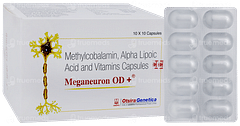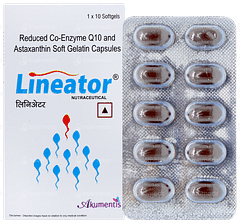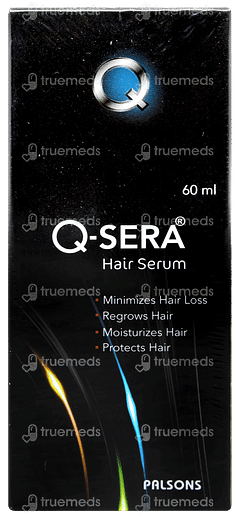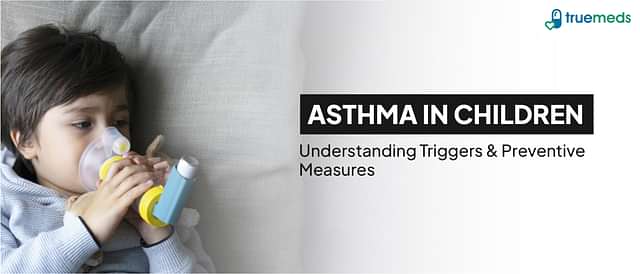Asthma
Asthma is a chronic respiratory condition that affects the airways, causing them to become inflamed and narrow. It can lead to symptoms such as wheezing, coughing, chest tightness, and shortness of breath. While there is no cure for asthma, it can be effectively managed with proper treatment and lifestyle changes.
Last updated on : 25 Jun, 2025
Read time : 15 mins

Overview of Asthma Disease
Asthma is a prevalent respiratory disorder that affects millions of people worldwide. It is a long-term condition that can cause significant discomfort and impact an individual's quality of life. Understanding the various aspects of asthma, including its stages and types, is crucial for effective management and treatment.
What is Asthma?
Asthma is a chronic inflammatory disorder of the airways, the tubes that carry air into and out of the lungs. In people with asthma, the airways become inflamed and narrow, making it difficult for air to move in and out. This inflammation and narrowing can cause recurring periods of wheezing, chest tightness, shortness of breath, and coughing. These episodes can range from mild to severe and can be triggered by various factors, such as allergens, irritants, exercise, or respiratory infections. While asthma cannot be cured, it can be effectively controlled with proper management and treatment.
Key Factors about Asthma
| Category | Details |
| Also Referred as | Bronchial asthma, chronic respiratory disease |
| Commonly Occurs In | Children, adults, individuals with allergies or family history of asthma |
| Affected Organ | Lungs, specifically the airways (bronchi) |
| Type | Allergic asthma, Non-allergic asthma, Exercise-induced asthma, Adult-onset asthma, Childhood asthma, Occupational asthma, Eosinophilic asthma |
| Common Signs | Coughing, wheezing, shortness of breath, chest tightness |
| Consulting Specialist | Pulmonologist, Allergist, Primary Care Doctor |
| Treatement Procedures | Preventer inhalers, reliever inhalers, asthma action plan, regular reviews, add-on therapies |
| Managed By | Corticosteroids (beclomethasone, fluticasone and prednisolone), Leukotriene receptor antagonists (montelukast and zafirlukast), short-acting beta agonists (salbutamol and terbutaline), long-acting beta agonists (salmeterol and formot |
| Mimiciking Condition | Chronic obstructive pulmonary disease (COPD), vocal cord dysfunction, gastro-esophageal reflux disease (GERD) |
Types of Asthma
There are several types of asthma which include:
1. Allergic asthma
This is the most common type of asthma, triggered by allergens such as dust mites, pet dander, pollen, and mould spores. Symptoms may occur seasonally or year-round, depending on the allergen.
2. Non-allergic asthma
This type of asthma is not triggered by allergens but by other factors such as stress, cold air, exercise, or respiratory infections.
3. Seasonal asthma
Symptoms of seasonal asthma are triggered by seasonal allergens, such as tree, grass, or weed pollen, and may only occur during specific times of the year.
4. Occupational asthma
This type of asthma is caused by exposure to irritants or allergens in the workplace, such as chemicals, fumes, or dust.
5. Exercise-induced asthma
Also known as exercise-induced bronchoconstriction (EIB), this type of asthma is triggered by physical activity and may cause coughing, wheezing, and shortness of breath during or after exercise.
6. Difficult asthma
This term refers to asthma that is challenging to control despite adherence to standard treatment plans and the elimination of potential triggers.
7. Severe asthma
Severe asthma is a form of asthma that does not respond well to standard treatments and may require higher doses of medications or additional therapies.
8. Eosinophilic asthma
This type of asthma is characterised by high levels of eosinophils, a type of white blood cell, in the airways and is often associated with more severe symptoms and a higher risk of asthma attacks.
9. Childhood asthma
Asthma that develops during childhood, often before the age of 5, and may be triggered by allergens, respiratory infections, or other factors.
10. Adult-onset asthma
Asthma that develops in adulthood, often after the age of 20, and may be triggered by hormonal changes, environmental factors, or underlying health conditions.
Early Signs of Asthma
The early signs of asthma include:
Increased mucus production, which can indicate the onset of an asthma episode
Runny or stuffy nose, suggesting congestion and stuffiness
Itchy neck or chin, often felt before the onset of more severe symptoms
Feeling tired or weak, especially during exercise
Wheezing or coughing after engaging in physical activity
Symptoms of Asthma
Asthma symptoms can vary from person to person, but some of the most common signs and symptoms of asthma in adults include:
1. Coughing
A persistent cough, especially at night, is a common symptom of asthma.
2. Wheezing
A whistling or squeaky sound when breathing out is a characteristic symptom of asthma.
3. Shortness of breath
Feeling like you can't catch your breath or feeling winded even when sitting still.
4. Chest tightness
A feeling of pressure or tightness in the chest that can make breathing difficult.
5. Difficulty breathing
Feeling like you're having trouble getting air in and out of your lungs.
Stages of Asthma
Asthma is classified into four stages based on the frequency and severity of symptoms which include:
1. Intermittent
Symptoms occur less than twice a week, with nighttime symptoms less than twice a month. Lung function tests show a forced expiratory volume (FEV1) of 80% or more of normal values. Treatment typically involves using a short-acting beta-agonist (SABA) inhaler as needed.
2. Mild persistent
Symptoms occur more than twice a week but not daily, with nighttime symptoms three to four times a month. Lung function tests show an FEV1 of 80% or more of normal values. Treatment often includes a low-dose inhaled corticosteroid and a SABA inhaler for flare-ups.
3. Moderate persistent
Symptoms occur daily, with nighttime symptoms more than once a week. Lung function tests show an FEV1 between 60% and 80% of normal values. Treatment typically involves a low-dose inhaled corticosteroid plus a long-acting beta-agonist (LABA) or a medium-dose inhaled corticosteroid, along with a SABA inhaler for flare-ups.
4. Severe persistent
Symptoms occur daily and frequently, with common nighttime symptoms. Lung function tests show an FEV1 less than 60% of normal values. Treatment often includes high-dose inhaled corticosteroids, LABAs, and other medications, along with a SABA inhaler for flare-ups.
Causes of Asthma
Asthma is caused by inflammation and constriction of the airways in the lungs. This can be triggered by various factors, such as:
1. Airway inflammation
Swelling inside the airways, excess mucus production, and muscle tightening around the airways lead to asthma symptoms.
2. Allergens
Exposure to allergens such as pollen, dust mites, and animal dander can trigger asthma symptoms in sensitive individuals.
3. Irritants
Air pollutants, smoke, and chemical fumes can aggravate asthma and trigger attacks.
4. Respiratory infections
Viral and bacterial infections of the respiratory tract can trigger asthma episodes.
5. Exercise
Physical exertion can induce asthma symptoms in some individuals, a condition known as exercise-induced asthma.
6. Medications
Medications like beta blockers, aspirin, and nonsteroidal anti-inflammatory drugs (NSAIDs), including ibuprofen and naproxen sodium.
7. Preservatives
Sulfites and preservatives found in certain foods and beverages, such as shrimp, dried fruits, processed potatoes, beer, and wine.
8. Health Conditions
Gastroesophageal reflux disease (GERD), a condition where stomach acid flows back into the throat.
Risk Factors of Asthma
While anyone can develop asthma at any age, certain factors put you at greater risk:
- Family history of asthma or allergies (eczema, allergic rhinitis)
- Having another allergic condition like atopic dermatitis or hay fever
- Being overweight or obese, which can worsen asthma symptoms
- Smoking or exposure to secondhand smoke
- Exposure to exhaust fumes or other types of pollution
- Occupational exposure to chemicals, dust or other irritants
- Respiratory infections during infancy or childhood
- Low birth weight and respiratory problems in infancy
Complications of Asthma
Asthma can lead to several complications if not managed properly. Some of these complications include:
1. Respiratory failure
Severe asthma attacks can cause the airways to become so inflamed that air cannot pass into the lungs, potentially leading to death if not treated immediately.
2. Chronic inflammation
Ongoing inflammation in the airways can lead to airway remodelling, resulting in chronic coughing and loss of lung function.
3. Medication side effects
Inhaled corticosteroids can cause oral thrush, throat irritation, and hoarseness, while oral corticosteroids can lead to weight gain, changes in eyesight, bloating, bruising, and cognitive problems.
4. Infections
Asthma can increase the risk of respiratory infections such as pneumonia, complicating recovery and worsening asthma symptoms.
5. Sleep difficulties and fatigue
Asthma symptoms can worsen during sleep, leading to poor sleep quality, tiredness, and fatigue. Some medications can also cause insomnia.
6. Lack of physical activity
Fear of triggering asthma attacks can lead to reduced physical activity, increasing the risk of other medical conditions like osteoporosis, type 2 diabetes, obesity, and heart disease.
Prevention of Asthma
While asthma itself cannot be prevented, several steps can be taken to prevent asthma attacks and manage the condition effectively. Some of the key strategies include:
- Identifying and avoiding personal triggers such as allergens (pollen, dust mites, pet dander), irritants (cigarette smoke, household cleaners), and other substances that can trigger asthma symptoms.
- Using allergy-proof bedding and keeping the home clean to reduce exposure to dust mites and other allergens.
- Avoiding outdoor activities during high pollen count days or when air pollution levels are high.
- Not allowing smoking in the home or car.
- Getting vaccinated against influenza and pneumococcal disease to reduce the risk of respiratory infections that can worsen asthma.
- Taking medications as prescribed by the doctor, even when feeling well.
- Using a peak flow metre to monitor lung function and identify early signs of an asthma attack.
- Developing an asthma action plan with the doctor to know what to do in case of worsening symptoms or an asthma attack.
- Maintaining a healthy weight, as obesity can worsen asthma symptoms and make the condition harder to control.
- Exercise regularly, as it can help improve lung function and overall health. However, it's important to talk to the doctor about safe exercise options and pre-exercise treatment if needed.
Diagnosis & Tests
Diagnosing asthma involves a combination of medical history, physical examination, and lung function tests. Some of the tests used to diagnose asthma include:
1. Medical history and physical examination
The doctor will ask about symptoms, family history of asthma or allergies, and exposure to triggers. They will also perform a physical exam, listening to the lungs for wheezing or other abnormal sounds.
2. Spirometry
This is the most common lung function test used to diagnose asthma. It measures how much air can be exhaled and how quickly. The test is done before and after using bronchodilator medication to see if there is an improvement in lung function.
3. Peak expiratory flow (PEF)
This test measures how fast air can be exhaled using a peak flow metre. It can be done at home to monitor lung function and identify early signs of an asthma attack.
Fractional exhaled nitric oxide (FeNO) test :
This test measures the amount of nitric oxide in exhaled breath, which can be a marker of airway inflammation.
4. Bronchoprovocation test
This test involves inhaling a substance that can trigger asthma symptoms and then measuring lung function to see if there is a response. It is used when spirometry results are normal but asthma is still suspected.
5. Allergy tests
Skin prick tests or blood tests can be done to identify allergies that may be triggering asthma symptoms.
6. Imaging tests
These imaging tests (such as a chest X-ray or CT scan) can help rule out other conditions that may be causing symptoms similar to asthma.
Treatment & Management
Asthma management depends on the severity and frequency of symptoms and is typically categorised into four stages. Treatment strategies combine quick-relief and long-term control medications to manage inflammation, prevent symptoms, and relieve acute attacks.
1. Intermittent Asthma
Treatment usually involves short-acting beta-agonist (SABA) inhalers like:
- Salbutamol: A quick-relief bronchodilator that relaxes airway muscles and rapidly relieves acute asthma symptoms like wheezing and breathlessness.
- Levalbuterol: A more selective SABA that provides rapid bronchodilation with potentially fewer side effects compared to salbutamol.
2. Mild Persistent Asthma
Treatment includes as-needed use of SABA inhalers and a daily low-dose inhaled corticosteroid (ICS) such as:
- Budesonide: A corticosteroid that reduces airway inflammation and prevents asthma flare-ups when used regularly.
- Beclometasone: An inhaled steroid that helps control chronic inflammation in the airways and reduce asthma symptoms.
- Fluticasone: A potent corticosteroid that helps maintain long-term asthma control by reducing airway swelling.
- Mometasone: An inhaled corticosteroid that lowers airway inflammation and helps prevent frequent asthma attacks.
3. Moderate Persistent Asthma
Requires regular SABA use for symptom relief and daily use of a low to medium-dose ICS combined with a long-acting beta-agonist (LABA) such as:
- Formoterol: A long-acting bronchodilator that relaxes airway muscles and provides symptom relief for up to 12 hours.
- Salmeterol: A LABA that helps maintain open airways and prevent nighttime or exercise-induced asthma symptoms.
- Budesonide + formoterol: Combines an inhaled corticosteroid with a long-acting bronchodilator to control inflammation and improve airflow in asthma.
- Fluticasone + salmeterol: A fixed-dose combination that offers anti-inflammatory and bronchodilatory effects for long-term asthma control.
- Theophylline: A bronchodilator that relaxes the airway muscles and may also reduce inflammation in chronic asthma management.
4. Severe Persistent Asthma
Requires high-dose management, which may include oral corticosteroids like
- Prednisone: An oral corticosteroid used short-term to manage severe asthma exacerbations by reducing inflammation quickly.
- Methylprednisolone: A systemic steroid used in acute asthma attacks to decrease airway swelling and improve breathing.
- Add-on biologic therapies may be considered, including:
- Omalizumab: A monoclonal antibody that blocks IgE, used for allergic asthma not controlled by standard treatments.
- Mepolizumab: Targets IL-5 to reduce eosinophil levels, helping prevent exacerbations in severe eosinophilic asthma.
- Benralizumab: Depletes eosinophils by targeting IL-5 receptors, used in managing severe eosinophilic asthma.
- Reslizumab: An IL-5 inhibitor that reduces inflammation and helps improve lung function in eosinophilic asthma.
- Dupilumab for severe asthma with type 2 inflammation: Blocks IL-4 and IL-13 pathways, reducing inflammation in type 2 severe asthma.
- Tiotropium, a long-acting muscarinic antagonist (LAMA), may also be added in select cases.
Individualised treatment plans, regular monitoring, and adherence to medications are essential for effective asthma control. Inhaler technique and trigger avoidance should also be reinforced at every stage.
Living with Disease
Living with asthma can be challenging, but there are several steps you can take to manage your condition and maintain a good quality of life:
Stick to your asthma action plan and take medications as prescribed
Identify and avoid asthma triggers, such as allergens, irritants, and respiratory infections
Maintain a healthy lifestyle, including regular exercise, a balanced diet, and stress management techniques
Monitor your asthma symptoms and peak flow readings to detect changes in your condition
Keep your home clean and well-ventilated to reduce indoor allergens
Inform your family, friends, and colleagues about your asthma and how they can help in case of an emergency
Attend regular check-ups with your doctor to assess your asthma control and adjust treatment as needed
When to See a Doctor?
It is essential to seek medical advice if you experience any signs or symptoms of asthma, such as wheezing, shortness of breath, chest tightness, or a persistent cough. If you have been diagnosed with asthma and your symptoms worsen or become more frequent despite following your treatment plan, consult your doctor. Seek immediate medical attention if you have difficulty breathing, cannot speak more than short phrases due to shortness of breath, or your lips or fingernails turn blue, as these could be signs of a severe asthma attack.
Key Takeaways
Asthma is a chronic lung condition that causes inflammation and narrowing of the airways, leading to symptoms such as coughing, wheezing, and shortness of breath.
There are several types of asthma, including allergic, non-allergic, exercise-induced, and occupational asthma.
Asthma symptoms can range from mild to severe and may vary from person to person.
Treatment for asthma depends on the severity of symptoms and may include the use of short-acting and long-acting medications, as well as lifestyle changes and environmental control measures.
Living with asthma involves sticking to an asthma action plan, avoiding triggers, maintaining a healthy lifestyle, and attending regular check-ups with a doctor.
Seeking early diagnosis and treatment for asthma is crucial in preventing asthma attacks and improving overall quality of life.
FAQs
What is the main cause of asthma?
While the exact cause is unknown, asthma is likely due to a combination of genetic, environmental, and lifestyle factors that lead to inflammation and sensitivity in the airways.
Which treatment is best for asthma?
The best asthma treatment typically involves a combination of bronchodilators, steroids, and lifestyle changes, with inhalers being the most effective way to deliver medication directly to the lungs.
What is stage 3 asthma?
Stage 3 asthma, or severe persistent asthma, involves daily symptoms that significantly limit activities and often requires high-dose medications for effective management.
What is the best way to manage asthma?
Effective asthma management involves identifying and avoiding triggers, using prescribed medication, monitoring symptoms, following an asthma action plan, and maintaining a healthy lifestyle.
How to relieve asthma symptoms?
To relieve asthma symptoms, use quick-relief inhalers as prescribed, practice relaxation techniques, stay hydrated, and maintain a clean, allergen-free environment.
Is asthma a lung disease?
Yes, asthma is a chronic lung disease that causes inflammation and narrowing of the airways, leading to breathing difficulties.
Which drink is good for asthma?
Warm liquids like herbal tea or warm water with honey can help relax the airways and alleviate asthma symptoms.
Can I live normally with asthma?
With proper management, including medication and lifestyle changes, most people with asthma can lead normal, active lives.
How to control asthma without an inhaler?
While inhalers are the most effective way to manage asthma, some complementary methods include avoiding triggers, practicing breathing exercises, and maintaining a healthy lifestyle.
What are the risk factors for asthma attacks?
Common risk factors for asthma attacks include exposure to allergens or irritants, respiratory infections, physical exertion, and stress.
References
American Lung Association. (n.d.). Asthma. https://www.lung.org/lung-health-diseases/lung-disease-lookup/asthma
Asthma and Allergy Foundation of America. (2015). Allergens and allergic asthma. https://www.aafa.org/allergic-asthma/
National Heart, Lung, and Blood Institute. (n.d.). Asthma. https://www.nhlbi.nih.gov/health-topics/asthma
Centers for Disease Control and Prevention. (2022, March 24). Asthma. https://www.cdc.gov/asthma/default.htm
National Health Service. (2021, August 3). Asthma. https://www.nhs.uk/conditions/asthma/
Check Related Salts
Browse Other Conditions
Latest health articles
Top Health Essentials




















Disclaimer
Top-Selling Medicines:
...View more
Top-OTC medicines:
...View more
Company
About UsHealth ArticleHealth StoriesDiseases & Health ConditionsAyurvedaAll MedicinesAll BrandsNeed HelpFAQSecuritySubscribe
Registered Office Address
Grievance Officer
Download Truemeds
Contact Us
Our customer representative team is available 7 days a week from 9 am - 9 pm.
v4.8.1
2025 - Truemeds | All rights reserved. Our content is for informational purposes only. See additional information.
Our Payment Partners



































